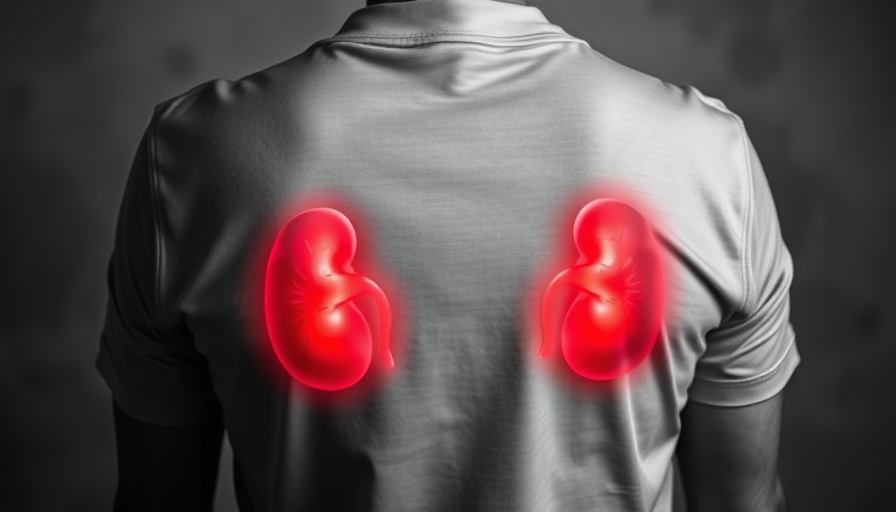
Understanding the Significance of CKD and T2D
Chronic kidney disease (CKD) and type 2 diabetes (T2D) are two significant health concerns that often go hand in hand. Each condition exacerbates the other, leading to severe complications, including cardiovascular issues. With advancing research, the medical community is making strides to combat these dual challenges. Recent findings from the CONFIDENCE trial shed light on how combination therapy can offer new hope for patients grappling with these chronic illnesses.
What the CONFIDENCE Trial Reveals
In an enlightening session at the 62nd European Renal Association Congress, researchers presented groundbreaking results from the CONFIDENCE trial. The study's core focus was on how the combination of the SGLT2 inhibitor empagliflozin and the mineralocorticoid receptor antagonist (MRA) finerenone significantly reduced albuminuria among CKD and T2D patients. An impressive 70% of participants on this combined therapy reached the American Diabetes Association’s recommended target for urinary albumin-to-creatinine ratio (UACR) reduction of over 30%. This metric is vital as it’s associated with kidney and cardiovascular health outcomes, making these findings relevant for clinical practices.
Shift in Treatment Paradigms
Lead researcher Dr. Rajiv Agarwal emphasized a pivotal change in the treatment approach for CKD and T2D. Instead of the traditional stepwise therapy, which involves gradually introducing medications, a more proactive method—upfront combination therapy—is being highlighted. Dr. Agarwal’s assertion reflects a growing consensus in the medical community: proactive strategies may offer more effective management of these conditions.
The Exciting Potential and Cautious Optimism
While the results of the CONFIDENCE trial received applause, experts like Dr. Mustafa Arici moderated the excitement with a note of caution. The trial focused on a surrogate outcome – UACR – rather than solid clinical endpoints like mortality or the need for dialysis. Though surrogate markers are important, the ultimate goal remains real-life improvements. The medical community awaits further studies to understand the full impact of these therapies on clinical outcomes.
Implementing Comprehensive Care Strategies
Dr. Peter Rossing, a co-investigator of the trial, pointed out that current standard practices in managing CKD and T2D are based on a multi-faceted approach involving four core pillars of treatment. These typically include ACE inhibitors, ARBs, SGLT2 inhibitors, and MRAs. However, the question of how to effectively implement these combinations in real-world scenarios remains largely unanswered.
Building on Existing Knowledge from Other Fields
Insights from combination therapies used in hypertension and heart failure could shape how doctors approach care for CKD and T2D interactions. Historical successes in other fields provide a framework that may translate to renal health, thereby enriching our understanding. This knowledge could lead to better patient outcomes and a more robust treatment framework that lasts.
The Urgency for Continued Research
Despite the promising data, Dr. Arici emphasized that further research is necessary. The numbers from the CONFIDENCE trial are promising, but they underline the need for larger studies that can definitively link the combination therapy to improved patient outcomes – including decreased mortality rates and reduced dependence on dialysis.
Call to Action: Advocate for Healthier Approaches
As CKD and T2D continue to affect millions globally, advocacy for proactive treatment options that incorporate findings such as those from the CONFIDENCE trial is essential. Engaging with healthcare providers about combining therapies may foster a new standard for treatment, one that truly addresses the complexities of these dual diagnoses. Staying informed about emerging research and treatment options can empower patients to take charge of their health.
 Add Row
Add Row  Add
Add 



 Add Row
Add Row  Add
Add 
Write A Comment